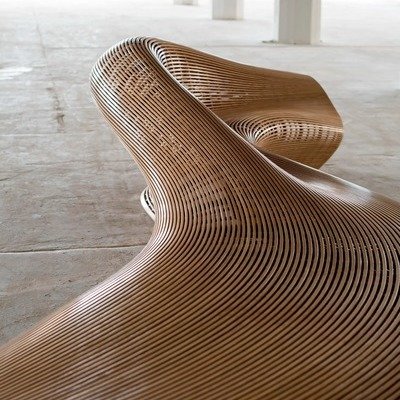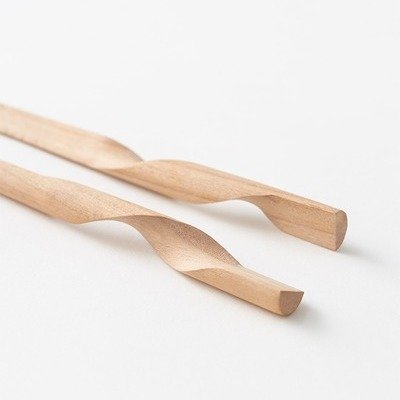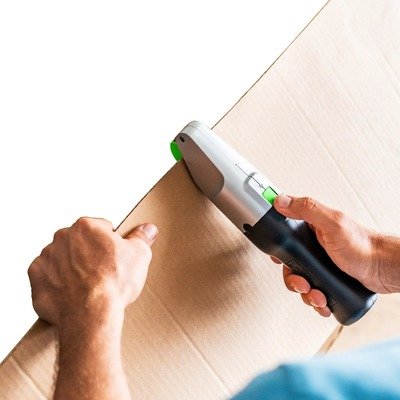Tour Four Design School Workshops with Core77
Core77 marks its 20 year anniversary by going back to where it all began—design school. As part of the Core77 Tech-tacular, our editorial series exploring the myriad ways that new technologies are shaping the future of design, we survey four design schools and their workshop facilities in New York City to understand the foundation being laid for the products of the future.
Pratt School of Design
At Pratt, the granddaddy of ID programs, “we like to think of technology not as an end,” Scott Lundberg, program director explains. “[It's not] a magic trick so we can now get rid of the glue, tape, cardboard. What we do really well is integrate these new opportunities with our traditional abilities and see where it takes us.”
The Design Center on Pratt's Brooklyn campus—a 150,000 square foot learning facility that joins two buildings with a modern pavilion—was opened in 2007. The Center still retains the feel of the historic loft spaces that now house student studios, workshops and facilities. When Core77 toured the space, there was the warm hum of a place that has educated generations of students—including the Core77 founders over two decades ago.
The coursework at Pratt emphasizes a deep understanding of the relationship between materials and industrial processes. And the role of digital technologies? "We use technology just as a tool, just like we use sculpture or abstraction, " explains Rebeccah Pailes-Friedman, the director of the IMARI Lab, "to make a connection with the person on an emotional level."
School of Visual Arts Products of Design
The relatively new Products of Design program was co-founded by Core77 partner Allan Chochinov in 2012 as a way to, "catalyze positive change through the business of making." With only 36 students, there is a unique intimacy found in the workshop, shared with SVA's Visible Futures Lab, where technicians are makers themselves and, as program administrator Marko Manriquez explained, "tools make new tools."
With an emphasis on making, all aspects of the student projects are produced on site. Documentation and storytelling are almost as important as the final product itself—students have access to a photo booth, there's photography training, a video storytelling class as well as an introductory web coding vertical. Also unique to the Products of Design program is the idea of architecture as technology. A lot of research went into how architecture can foster creativity. Movable walls, tables on wheels and walls of sketching surfaces enable students to assert themselves in the space, not to mention a communal kitchen, and mold it to their needs.
NYU ITP
NYU's ITP program has been a pioneering space for, "exploring new forms of communication and expression," since it was begun in 1971. The program—classrooms, administrative and technical offices—occupies a whole floor in NYU's Tisch school. The chaos of the space reflects the nature of an inter-disciplinary program that attracts an array of students from the fields of architecture, design, art, engineering, computer science, biology and media studies. At ITP, experimenting and making is a largely collaborative process. As John Duane, Shop Supervisor of the program explained, "We're always hacking tomorrow."
"For us it's really nice to be able to sit next to somebody new every day," Midori Yasuda, Admissions/Special Events/Alumni Coordinator, told us as she gave us a tour through the open studio space. "You have different ideas of how somebody can go about a project, or 'Have you thought about doing it this way?' So, those types of connections kind of happen, especially when it's a free form space like this."
Parsons The New School for Design
"How do we create making on 5th Avenue?" Rama Chorpash, Director of the Industrial Design program at Parsons posed this question as he gave Core77 a tour of a seemingly endless number of making spaces scattered throughout the facilities at Parsons The New School of Design. After a burst pipe flooded the product design shops in January 2014, the university kicked into high gear to execute their vision for a shared making space that could be utilized by all students. By early 2016, the New School will open a 25,000 square foot shared making space that will occupy the second floor of three connected New School buildings along 5th Avenue in Manhattan.
Until then, the university is shifting into shared making spaces across their various workshops and asking questions about safety, academic pedagogy and the ecological consequences of certain ways of making while building out a new facility. This means that they are testing new systems of administration, experimenting with material choices (there's a full-time director that investigates materials and environmental safety), and considering teaching/making adjacencies. "We want to model the future that we want to be living in."
-
oFavorite This
-
QComment
K
{Welcome
Create a Core77 Account
Already have an account? Sign In
By creating a Core77 account you confirm that you accept the Terms of Use
K
Reset Password
Please enter your email and we will send an email to reset your password.




